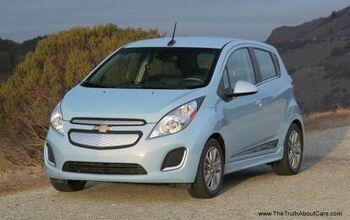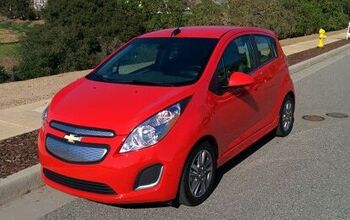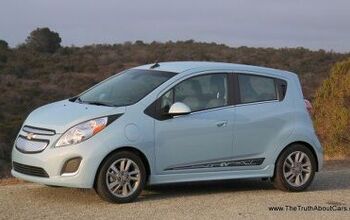Where Will The Chevrolet Spark EV Be Built?
As I noted earlier this week, GM’s decision to bring a pure-electric version of the Chevy Spark to the US opens up an interesting challenge to its “range anxiety”-centric marketing approach. But WardsAuto reports that there’s another challenging question coming out of the decision: where will the baby EV be built? And as I’ve found, GM’s reticence on the topic of the Spark EV program only deepens the mystery for Wards, which writes
Some media are reporting the EV will come from South Korea, where gasoline- and diesel-powered Sparks currently are produced. If so, that’s news to the folks at GM Korea.
GM Korea does not have a prototype of the Spark EV, and “no location of production has been decided yet,” a spokesman tells WardsAuto. He also says there is no EV activity at the GM minicar production complex, located in Changwon, the sole source for the Spark.
Nor is there a Spark EV prototype at the main engineering and vehicle-production complex in Bupyeong, where GM Korea is headquartered.
The Spark is built in Korea, India and Uzbekistan, and EV development of the previous-generation Spark took place in India, initially under REVA and later in-house at GM. An EV version of the Chevy New Sail has also been developed in China, while an EV Cruze is being tested in Korea. But GM won’t say which of its global divisions is developing the new Spark EV, let alone where it will eventually be made. One thing seems certain though: unlike the Volt, this forthcoming EV won’t enjoy the benefits of a “Made in USA” sticker (even though the Volt’s battery cells, transmission and range-extending engine are currently built in Korea, Japan and Austria respectively). In fact, the Spark EV could just be the first Indian- or Chinese-built car to go on sale in the US.
More by Edward Niedermeyer
Latest Car Reviews
Read moreLatest Product Reviews
Read moreRecent Comments
- Redapple2 I retract my comments and apologize.
- Flashindapan I always thought these look nice. I was working at a Land Rover dealership at the time the LR3 came out and we were all impressed how much better it was then the Discovery in just about every measurable way.
- Bd2 If I were going to spend $ on a ticking time bomb, it wouldn't be for an LR4 (the least interesting of Land Rovers).
- Spectator Wild to me the US sent like $100B overseas for other peoples wars while we clammer over .1% of that money being used to promote EVs in our country.
- Spectator got a pic of that 27 inch screen? That sounds massive!

































Comments
Join the conversation
BTW it's change anxiety not range anxiety.
Uzbekistan? Isn't that where they have all the oil they have difficulty getting out of the country? It's unlikely, but it would be ironic if electric cars get imported to the US or Europe from a developing nation at or near all those oil supplies.